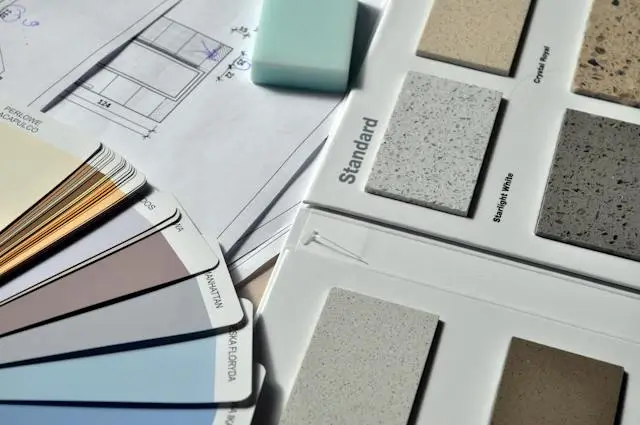Polyvinyl Alcohol (PVA) is a versatile synthetic polymer known for its unique properties and wide-ranging applications. It’s a crucial material in the manufacturing and construction industries, where its attributes like strength, flexibility, and thermal stability are highly valued.
Applications Of Polyvinyl Alcohol in Manufacturing
PVA is critical in the manufacturing sector due to its unique properties. Its applications range from everyday products to specialized industrial materials.
Adhesives And Glues: PVA-based adhesives are essential in manufacturing, offering robust and reliable bonding solutions. In the automotive industry, for instance, glues made from this polymer are used to bond interior panels and upholstery, ensuring durability and a high-quality finish.
Similarly, electronics manufacturers rely on PVA suppliers for adhesives, which are vital for securely assembling components without conducting electricity.
Films And Coatings: This polymer’s role in films and coatings extends across multiple manufacturing industries. For example, in medical device manufacturing, PVA films are used to create sterile packaging, ensuring medical instruments and supplies remain uncontaminated.
Additionally, certain types of furniture, especially those made of wood or containing wood components, may have coatings made from this polymer to protect against moisture, wear, and tear.
Textiles And Fibers: The textile industry benefits from incorporating PVA into fibers and yarns. It enhances the strength and durability of fabrics, from clothing to upholstery. It’s also used to produce high-performance textiles, like those used in sports equipment and protective gear, where extra resilience is required.
3D Printing: In additive manufacturing, PVA is used as a support material due to its water solubility. This property allows for easy removal of the support structure in complex 3D printed designs, which is particularly valuable in intricate prototypes and medical models.
Polyvinyl alcohol’s applications in manufacturing are not just about its functional benefits. They also signify a move towards more sustainable and safer materials in various industries, reflecting the evolving needs and values of today’s society.
Applications of Polyvinyl Alcohol in Construction
PVA has become an integral part of the construction industry, enhancing the quality and durability of building materials. Its applications are diverse and crucial in modern construction practices.
Concrete Additives: This polymer’s role in concrete is multifaceted. When added as fibers, it significantly boosts this building material’s tensile strength, making it more resistant to cracking and ideal for critical structures like bridges and skyscrapers. It also improves the overall workability of concrete, easing its mixing, placement, and finishing processes. Furthermore, it enhances the durability of the finished product, offering better resistance to environmental stresses.
Mortar And Grout: In tiling and masonry, PVA serves as an invaluable binding agent. This application ensures a robust bond between tiles and their substrates, reducing the risk of tiles coming loose over time. Adding it to mortar and grout bolsters their adhesive qualities and increases their resistance to moisture—a critical factor in areas exposed to water, like bathrooms and kitchens. This ensures longevity and reduces maintenance needs.
Construction Chemicals: This versatile polymer finds extensive use in construction chemicals, particularly in waterproofing and sealing applications. As a base for waterproofing agents, it creates an effective moisture barrier for basements, foundations, and walls, which is essential for the structural health of buildings.
Additionally, it enhances the performance of sealants and joint fillers, providing the necessary flexibility and durability to accommodate structural movements and environmental variations.
Binders In Paints: PVA-based paints exhibit remarkable adhesion, uniformity, and ease of application, making them suitable for both interior and exterior surfaces. Their durability ensures long-lasting finishes, reducing the need for frequent repaints. This application contributes to the aesthetic appeal of constructions while adding a protective layer against environmental elements.
These varied applications highlight the material’s role in improving quality, sustainability, and efficiency in building practices.
Future Trends and Innovations
The application of polyvinyl alcohol in manufacturing and construction is continually evolving, influenced by ongoing innovation and emerging trends.
Advancements In PVA Properties: Research is constantly pushing the boundaries of its capabilities. Efforts are underway to enhance its strength, flexibility, and environmental resistance. Innovations in its chemical formulation are aimed at creating variants with even greater durability and adaptability, making them suitable for more demanding applications in existing and new industries.
Emerging Applications: The potential applications of this polymer are expanding into new and exciting territories. In the medical field, research is exploring its use in biocompatible materials and drug delivery systems. In the energy sector, composites of this polymer are being studied for potential applications in energy storage devices.
Sustainability And Recycling: A significant trend is the focus on sustainability. Efforts to improve the recyclability of this polymer and reduce its environmental impact are gaining traction.
Developments in biodegradable variants are particularly promising, offering solutions that align with global environmental goals. Additionally, its integration in circular economy models—where waste is minimized, and materials are reused—is being explored.
These trends indicate a bright future for this polymer, with its applications set to become more diverse, sustainable, and integral to various industries.
Final Thoughts
Polyvinyl alcohol’s role in manufacturing and construction cannot be overstated. Its versatility, combined with a commitment to sustainability, positions it for continued growth and innovation in a wide array of applications.
As industries evolve, the reliance on this polymer is expected to increase, underlining its significance in modern manufacturing and construction processes.
